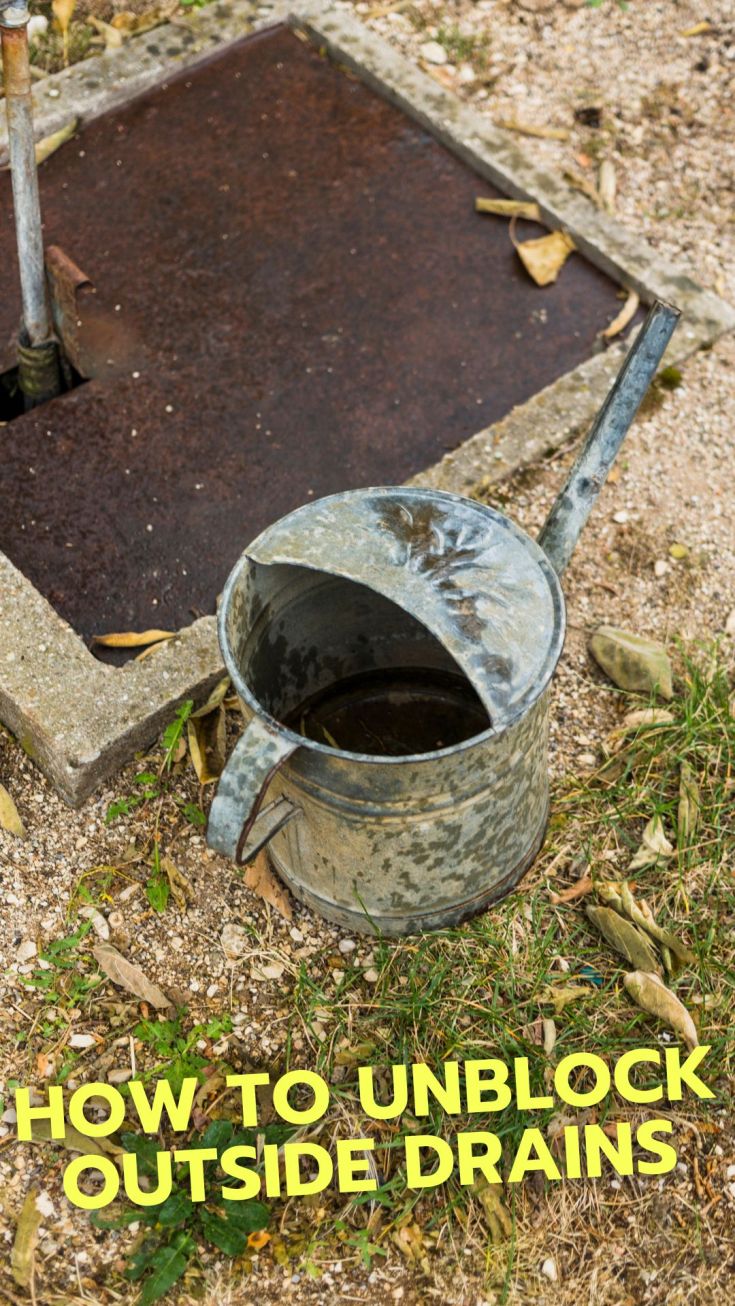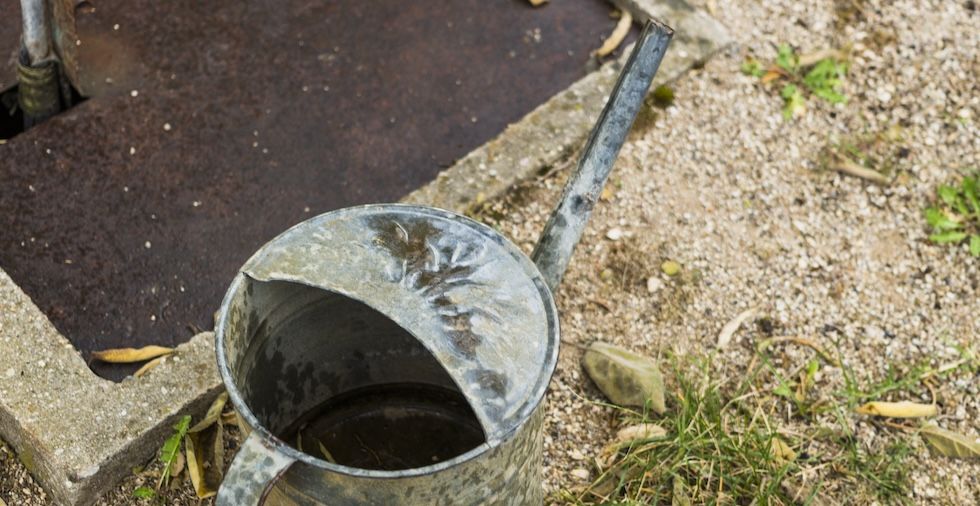- What blocks outside drains anyway?
- Step-by-step guide to unblocking an outside drain
- Tips for preventing future blockages
Blocked drains can be an incredibly frustrating issue, not to mention a total nightmare to deal with. The truth is that an outdoor drain can become clogged for several reasons, including debris, leaves, dirt, or grease. However, when it happens, you need to do something about it sooner rather than later. Ignoring the nasty problem simply won’t do at all.
Believe it or not, these outdoor blockages can lead to flooding, nasty smells, and, in extreme cases, damage to your home. Luckily, you’ve come to the right place. In this guide, we will discuss how to unblock a drain outside step-by-step and cover many different drain types, such as kitchen drains, toilet drains, gutter drains, and so much more. Let’s get started.
What blocks outside drains anyway?
First up, let’s talk about the cause of the problem. Before diving into how to unblock outside drains, it’s important to understand the common reasons for outdoor drain blockages:
Leaves and debris: Here’s the most common cause. Fallen leaves, especially during autumn, can quickly clog gutter drains and floor drains.
Grease and fat: Do you pour cooking fats and grease down the kitchen sink? These fats can solidify and cause blockages both inside and outside your home.
Dirt and mud: Heavy rains can wash mud and dirt into outdoor drains. One of the first things you should do is check to see whether there is mud in the outside drain.
When your drains get blocked, you will start to notice some common signs. Your garden might begin to flood with water, for example. Don’t ignore the problem. Understanding the cause of the blockage will help determine the best method for unblocking the drain.
Step-by-step guide to unblocking an outside drain
Now that you understand what may be causing your blockages let’s discuss what you can do about them. Follow the simple steps below to get started.
Step 1: Pinpoint the cause
First, you need to determine whether you have a full or partial blockage. If the water is slowly draining, the blockage might be minor. However, if there’s water backing up or flooding, the blockage is likely more severe. Consider what type of blockage you’re dealing with. For example, it could be a kitchen drain, a gutter drain, or a sewage drain. Different types of drains may require specific tools.
Step 2: Gather the tools you need
To clear your durian yourself, you will need the following tools:
Drain rods: These flexible rods can reach deep into the pipes to push or pull blockages. You can actually screw them together and go as deep as you need to deal with the blockage.
Plunger: You can get the same type of plunger you would use for other issues in your home. Chances are, you’ve used one of these before.
Drain unblocker: If your drains are backed up with grease, you need a commercial drain unblocker. Always check the reviews before you choose the best one for you.
Protective gear: You need to wear gloves, safety glasses, and a mask to protect yourself. As you are clearing out the debris, you don’t want to get it in your eyes or mouth!
Pressure washer or garden hose: You don’t need to be an expert to understand that high-pressure water can be effective in clearing debris.
Step 3: Clear the gutter and floor drain
Start by clearing everything that you can see, including the gutters and floor drains. Leaves, dirt, and other outdoor debris often block these areas.
First, remove the drain cover and clean out any visible debris. You can often do this with your hands, so long as you’re wearing gloves. Take extra care to get rid of anything on the surface that may be contributing to the outdoor drain blockage.
Step 4: Try using the drain rods
Drain rods are particularly useful for unblocking an outside drain or drain pipe. As we’ve already mentioned, these flexible rods can be screwed together to reach deep into your drainage system.
Start by opening the drain cover, being careful not to damage it. Insert the drain rod into the blocked pipe and push it through, rotating clockwise. Add new rod sections until you feel resistance, indicating you’ve hit the blockage. You can then push or twist the rods to break up the clog. Next, carefully pull the rods out to remove as much of the blockage as you can.
Step 5: Use a plunger next
You’re probably used to using a plunger for kitchen drain blockages and toilet drains. If the blockage is minor enough, you can use this method. Simply place the plunger over the drain opening, ensuring there’s enough water in the drain to cover the suction cup.
You know the drill… Push and pull the plunger rapidly to create pressure. After a few attempts, remove the plunger to see if the water drains away. If this works, you may not need to use other methods to unblock your outside drain.
Step 6: Try a commercial unblocker
Many people use drain cleaners or commercial unblockers, which contain chemicals that break down debris and clear blockages. Follow the instructions on the packaging, pour the cleaner into the drain, and flush with hot water after the recommended waiting period (generally 10 to 30 minutes). You might want to use it a couple of times to get the results that you need.
Step 7: Blast it with a pressure washer or hose
A pressure washer, jet washer, or high-pressure garden hose can be highly effective for cleaning outdoor drains clogged with dirt or leaves. Start by feeding the hose into the drain as far as possible. Next, turn the water on the highest possible setting and give it a good blast.
Move the hose (or the pressure washer nozzle!) up and down. This motion may help you loosen whatever is blocking the drains. Once again, you can do this a few times to get it right.
Tips for preventing future blockages
Now that you know how to unblock a drain outside, let’s talk about ways that you can prevent it from happening again. Follow our tips below:
Try using drain guards
Are you worried about your drains getting blocked again? Install guards over outdoor drains to prevent leaves and debris from entering them. You can get these guards online and use them on all of your drains. It’s a small thing that can make a big difference.
Don’t pour cooking fat down the sink
While it may be tempting to pour cooking fat down the sink, this can cause severe blockages. Instead, dispose of cooking fat and oils in a bin. It’s a longer method, but it’s the best way.
Clean your drains regularly
Clean gutters and kitchen drains regularly. While it may not be the most fun in the world, doing this can significantly reduce the likelihood of them getting blocked. You can also flush your drains with hot water to help prevent the build-up of fats and grease.
Knowing how to unblock a drain outside is a valuable skill that can save you both time and money. Whether you’re dealing with a kitchen drain blockage, a toilet drain overflow, or a clogged gutter drain, the methods outlined in this guide can help you tackle the issue effectively. By following these steps and taking preventive measures, you’ll be able to keep things running smoothly. Why not get started with it now?
Q&A
Did we miss something along the way? If you’re looking for more answers, you’ve come to the right place. Read our frequently asked questions below:
What should you do when the toilet drain is overflowing?
This problem usually means that your sewage drain outside is blocked. While you can try the methods we have outlined—including using a drain rod—it may be best to call an expert. Having a plumber deal with the problem is the best way to take care of it.
How much does It cost to unblock outside drains?
If you can’t clear the blockage yourself, you may need to call a professional plumber. The cost depends on the severity of the blockage, the type of drain, and where you live in the UK. According to LBC Exterior Cleaning, you can expect to spend between £80 and £175.
How to remove fat from outside drains?
It can be difficult to remove fat from outside drains. To get started, you can use a commercial cleaner or drain unblocker. Read the instructions on the bottle to make sure that you get it right. Alternatively, you can try flushing out your drain with boiling water. If neither of those approaches works, you should call a professional plumber.
How did you get on with unblocking your outside drain? Leave a comment below!


Leave a Reply